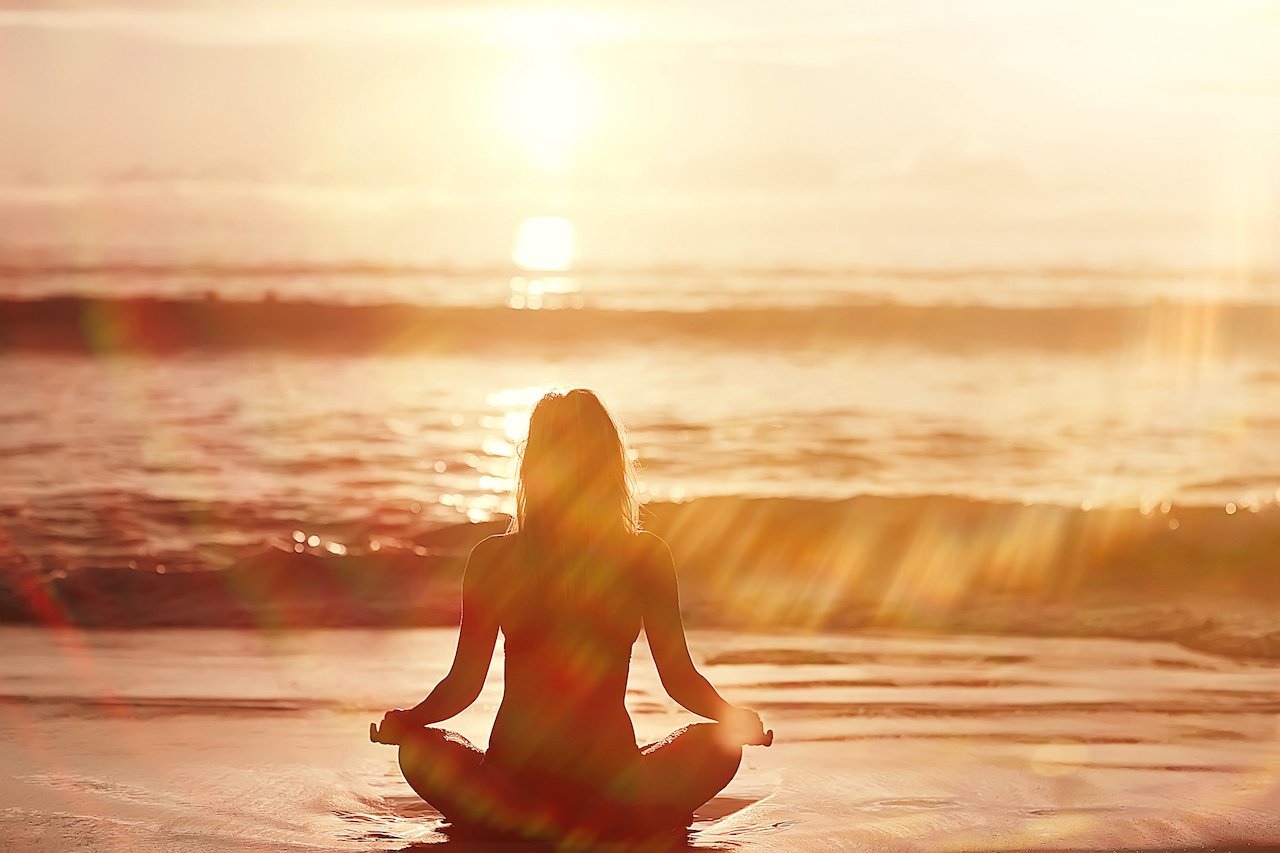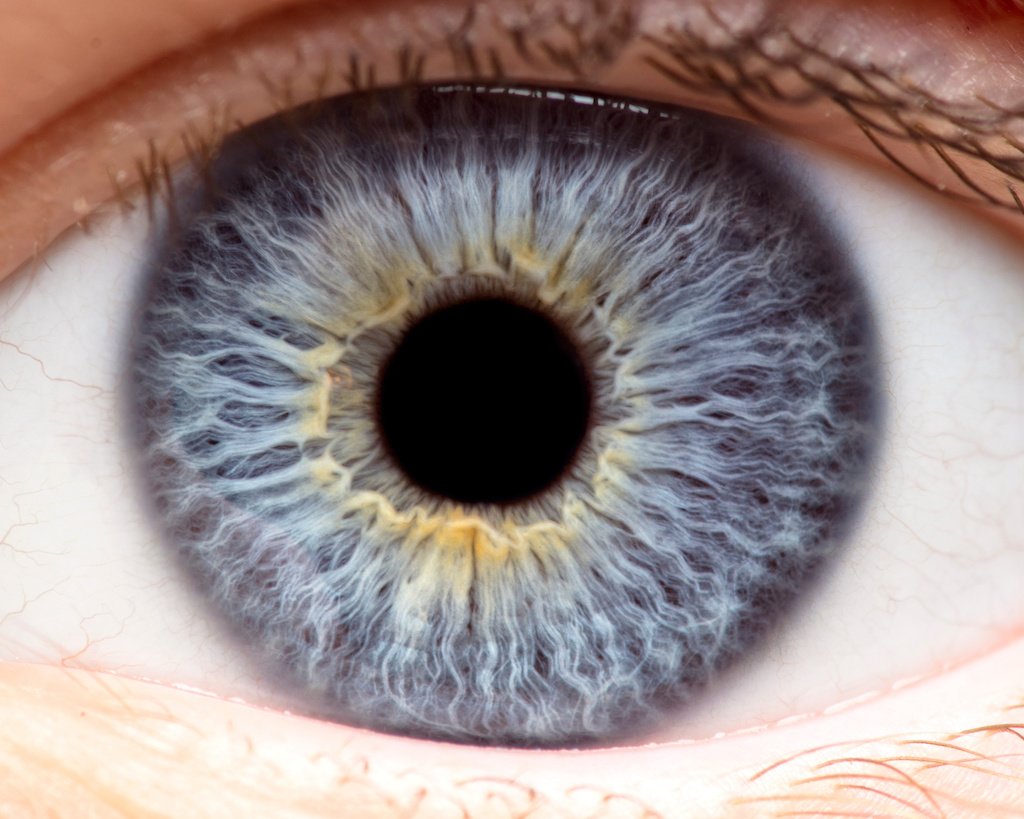The Simple, Free Habit That Can Transform Your Health: The Science Behind the Benefits of Morning Sunlight & 5 Tips and Tricks for Getting the Most Out of Your Sunlight Exposure
This article contains affiliate links to products that I use myself or can recommend. You can read about my affiliate policy here.
There's a simple and natural way to boost your energy and improve your mood and general wellbeing without any side effects and it’s free.
That's right; I'm talking about early morning sunlight. With just a few minutes of exposure daily, you can boost your mood, improve your sleep quality, enhance your immune system, strengthen eyesight, better your skin - and much more.
In this post, you’ll get seven science-backed incredible benefits of morning sunlight. Read on to the end, and I'll give you five tips on how you can make the most of this health-boosting morning sunlight and how to incorporate it into your daily routine.
Watch ↓ or listen to the article
How Morning Sun Exposure has Affected Me
I've personally experienced the benefits of morning sunlight. Not only has it improved my mood, energy, skin, and focus, but I've also noticed an improvement in my vision. Every day I write longhand morning pages, which is three pages handwritten uncensored and uninterrupted text straight from mind to paper. This morning I forgot to put on my glasses. I usually need at least a pair of +1s to see what I'm doing - but not a problem today. I find it amazing what just a few minutes of exposure to natural red light have done for my wellbeing.
The Sun is Life Energy
The sun is a powerful source; it's more powerful than most people give it credit for.
Some might take the sun for granted, and many are frightened.
However, every aspect of how we function is controlled by light.
My new morning sunlight routine has reminded me of how important the sun is to all life. Just think of how to kill weeds in your garden. You cover it up so no light can get to it.
What happens in spring, when the sun returns and the days get longer? Everything grows like crazy - even our body hair grows faster when it gets sunshine.
Giving the sun a bad reputation has done more harm than good. So many people today suffer from vitamin D deficiency - a vital vitamin for many bodily functions. And more people than ever suffer from stress, sleep disorders, anxiety, and depression.
When I meet with the morning sun, I think of the old saying:
"Life is energy; all of our energy initially comes from the sun."
What's so Special about Morning Light?
At noon the sky is blue because the blue wavelengths of light are short.
But at sunrise, when the sun is closer to the horizon, the rays of light have to travel a longer distance and through more of the atmosphere before we can see it. This light has infrared and near-infrared (NIR) light that we can't see, but studies show it significantly affects our bodies, and the correct dose of infrared light has many beneficial effects on our health.
What is Infrared Light?
Infrared light is a spectrum of light that we can't see, but it shapes our biology in a powerful way.
You sense infrared light as "heat." The heat you feel from the sun and the heat you feel when you put your hand close to an oven or fire — that’s also infrared light.
Infrared light doesn't just transfer "heat" to the body — it turns the water in our cells into batteries.
It is not a coincidence that sitting down next to a fire is so comfortable. Firelight is a spring of infrared light that helps manage melatonin production and keep our circadian rhythms under control.
Here are 7 advantages of Early Morning Sunlight
1. Better Sleep and More Energy
Dawn is the most important light for timing our circadian rhythm. The circadian rhythm is our biological clock, an internal timer set to a 24hrs rhythm. It's present in all life. It times all of our physiology and all of our behavior. The circadian Rhythm is set every day by the rising of the sun.
All active processes are designed for daytime, and all restorative processes are kept to nighttime.
The human eye has an incredible ability to absorb, detect and use sunlight.
When cells in our eyes detect that morning light, they send signals to different parts of your brain, which do several beneficial things, such as turning off the production of the sleep hormone melatonin, in our pineal gland and helping increase cortisol, the waking hormone. We usually think of cortisol as a stress hormone, but our body requires a certain amount of cortisol to function, especially in the morning.
The main effect of morning light is to stimulate the main biological clock in our brain, which in turn synchronizes all the numerous clocks in your body to be in tune with the great natural rhythms of nature.
This is critically important since being out of tune with our daily biological clock increases the risk for many diseases. Just think of how you feel when you have jetlag or if you've been working night shifts. That's when that biorhythm is really out of wrack.
We live a very artificial life. Artificial life depends on artificial light. We give the body an incorrect time cue by seeking out artificial light. That’s why you might feel far more alert at night and low during the day.
But if you start your day by going outside and getting some natural morning light in your eyes, it resets biological rhythms, primes your brain, and sets up your mood, focus, and energy.
It even sets up a time release, so you sleep better at night.
2. Morning Light Is a Powerful Antiaging Antioxidant
It's common knowledge that our bodies produce melatonin at night, but did you know that new research shows that nighttime melatonin accounts for only 10 percent of our bodies' total melatonin?
The other 90 percent of the melatonin we make happens in the daytime, and exposure to sunlight triggers that.
Daytime melatonin, called subcellular melatonin, provides essential energy for breathing, eating, digesting, detoxing, pumping the heart, exercising, and much more. The mitochondria in our cells - or the body's energy production centers - produce this subcellular melatonin.
The new study found that the penetrating rays of near-infrared light (NIR), which make up 70 percent of the solar photons hitting the body, trigger cellular melatonin. Near Infrared light from the sun can penetrate into the body's tissues more deeply than any other frequencies of the solar electromagnetic spectrum.
Researchers recently identified melatonin as a major antioxidant and repair mechanism associated with cellular energy. When we produce energy we also create waste in the form of reactive oxygen species (Free Radicals. Free Radicals are considered the most damaging forms of oxidation in the body, and to get rid of this potential damage, the body produces melatonin, a very potent antioxidant.
Inside our mitochondria are vital enzymes called cytochrome c oxidase. Infrared light activates cytochrome c oxidase, and it's the key enzyme in transforming the sun's infrared light into melatonin.
The constant production of harmful oxidation (ROS) in our cells can lead to inflammation. This process can increase with age, while our ability to mitigate it declines. Much of this age-related damage is due to a deficiency of sunlight or, more specifically, a lack of infrared light and the production of daytime melatonin.
The best time to get infrared light exposure is during sunrise and sunset when there is an unopposed infrared and red light.
Back in the day, humans sat around the fire before bedtime and got some extra infrared light from that too. Today, we sit in front of our blue screens.
3. Betters Vision
In a study from November 2021, researchers from the University of London found that three minutes of exposure to deep red light once a week, when delivered in the morning, can significantly improve declining eyesight.
There are four areas in particular where morning light improves eyesight.
1. Reduces the usual age related eye diseases. It help reduce inflammation, eye floaters, cataracts, dry eye, glaucoma, and macular degeneration.
2. Help prevent nearsightedness. A growing body of research suggests sunlight, in general, may benefit the eyes and the development of the eyes in childhood, and the time spent outdoors in the sun partly influences the shape of children's eyes. More children are developing nearsightedness than has been the case historically; some experts have theorized that the longer eyeball length associated with myopia may result from less time spent outdoors and more time looking at screens.
3. Better color perception. Morning sun can help improve color perception because exposure to natural light can help your eyes distinguish between colors more easily. This can be especially beneficial for people who work in professions that require accurate color perception, such as artists or designers.
4. The infrared morning light very much help counteract the damage of the blue light.
Studies have shown that 670nm infra-red eye wear delivered the same benefits for the eyes when used in the mornings.
4. Reduces the Risk of Sunburn
Early morning light, specifically infrared, is a critical signal in prepping the skin for a day in the sun.
Humans evolved to spend all day in the sun, and the early morning light is important in preparing the body and skin for the mid-day sun. In nature, the human body would never be exposed to damaging UV (ultraviolet)light without ample exposure to the red and near-infrared light that strengthens and protects the skin from the UV light we so desperately lack too.
The unopposed infrared light at sunrise and sunset prepares and repairs the skin from the midday UV light exposure.
To understand how this can be, consider how our ancestors spent their days. They didn't stay in a dark cave until noon. Instead, most were up and working at dawn and throughout the day. The skin didn't need to use the same protective hormones if it was a cloudy or darker winter day. However, the early morning light signaled the body to prepare if it was a sunny summer day.
One of the best ways to reduce the risk of sunburn is to get more sun. Yes, you heard me right.
When you spend time in the sun, your body produces more melanin. Melanin provides pigmentation to your skin, eyes, and hair. It absorbs harmful UV rays and protects your cells from sun damage. The darker the skin, the more UV protection the skin holds.
Melanin also protects the genetic material stored in your cells by keeping out harmful UV rays.
We've admirably adapted to the sun's radiation due to millions of years of evolution.
MORE: Easy to Make DIY Sunscreens | Safe for Babies & Ocean Safe | High SPF & Vegan
5. Improves skin
I've noticed a change in my skin. I'm almost 60, and despite that I look after my skin with a healthy diet and great skincare; my skin is naturally not as tight as it used to be. However, I have noticed a change lately. After just a week of my new morning sunlight practice, my neck and jawline's skin have tightened up a bit.
There is a lot of research that correlates UV-A and UV-B with the aging of the skin. However, the sun can also provide a particular type of light that keeps it young and healthy.
While the research is still new, many studies support infrared light's antiaging and smoothing effects. Studies show that red light helps improve skin elasticity and smoothness. It boosts collagen production, which otherwise slows or stops as the skin ages.
Red light also helps stimulate the healing pathways in the skin.
Many people who experience skin wounds, whether from an accident, surgery, or past acne, can struggle to regain smooth skin. Research shows that infrared light can help promote healing and smoothness too. It can help with wound healing and reduce inflammation resulting from a skin wound.
It also can help in the fight against acne. Many people struggle to get clear skin without using strong chemicals and antibiotics, which can lead to skin aging. Researchers have found that red light reduces inflammation that contributes to acne.
Morning sunlight exposure also helps treat other skin conditions, such as eczema and psoriasis.
The research is so promising that many infrared devices are on the market now and continue to grow in popularity. However, the early morning sun is the most natural way for everyone to get a valuable red light. It's also a totally free way to harness infrared light's antiaging and skin-soothing effects.
If you don't have access to these healing early morning sun rays. You can buy an infrared lamp, which works surprisingly well, and why it's also used on some cancer patients as treatment because the red light penetrates the skin, bones, and cells.
6. Elevates Mood
A good dose of the outside bright sunshine at any time during the day has a massive impact on elevating mood and general feelings of wellbeing.
A study at the Broadmoor Institute examined the effects of the equivalent of 20 minutes of bright sunshine in the morning on mood. They found that bright light had a much more significant effect on elevating mood than some anti-depressants.
Here is why sunlight is such a mood booster:
Dopamine is a neurotransmitter that plays a key role in the brain's reward and motivation system and is associated with feelings of pleasure, satisfaction, and motivation.
When we expose our eyes to sunlight, a signal is sent to the brain's hypothalamus, releasing serotonin.
Serotonin is a precursor to dopamine, which means that the more serotonin we produce in response to sunlight exposure, the more dopamine can be synthesized.
Increased dopamine production in the brain help improve mood, increase motivation, and reduce the risk of depression and other mood disorders.
Talking of dopamine…
Here’s a tip to help you cope with smartphone addiction:
Do not start your day on social media, in your email inbox, or with work.
What you're doing is you're setting up a feedback loop and setting up a theme for the day.
If the first thing you do when you wake up is jump on social media and scroll, you're setting up an expectation of cheap dopamine hits throughout the day, and your brain will keep looking for them.
You'll be drawn back to Instagram and back to your inbox, back to this kind of constant back-and-forth between the dopamine circuits in the brain.
Instead, drink water, move your body a little, open the windows, and let your eyes and face meet the morning sunlight.
NB! While some sunlight exposure is beneficial, protecting your eyes and skin from intense light (especially in the snow) and UV radiation is also important. This can include protective clothing and sunglasses with UV protection.
MORE: Unlocking the Power of Dopamine: How to Use Cravings to Fuel Your Success
7. Boosts the Immune System and Overall Well Being
All the above health benefits of morning sun exposure - the better sleep, more melatonin, and less inflammation contribute to a much more robust immune system, better mood and less stress.
Exposing your skin to red and near-infrared light can help make the cells more robust and resistant to infections. This is because the red light gives cells a bit of "stress," making them healthier. It's like lifting weights at the gym to make your muscles stronger.
Red light therapy can also help the body fight off viruses and bacteria by:
Making certain types of cells grow and move around more.
Turning on other cells that can "eat up" and eliminate harmful substances.
Helping the body create new healthy cells.
Activating certain cells that help reduce inflammation.
Safe and low exposure to red light improves the body's response to external viruses and bacteria and makes it more able to fight off infections.
What to do?
Go outside at sunrise
Face East
Sky gaze to the brightest part of the sky
5 Ways You Can Make the Most of the Health-Boosting Morning Sunlight and How to Incorporate It into Your Daily Routine
Making the most of the health-boosting benefits of morning sunlight doesn't have to be a chore. In fact, with just a few simple changes to your daily routine, you can easily incorporate this habit into your day-to-day life.
Here you have 5 ways to make the most of morning sunlight and boost your health:
1. No Window Watching
Get the morning light the right way. It's not enough to look through the window glasses because you get about four or five times less light and rays on the inside of the window glass than on the outside.
2. Rise and Shine
Wake up a little earlier to give yourself time to enjoy the morning sunlight. Even just 10-15 minutes of sunlight exposure can have a positive impact on your mood and energy levels.
The best way to make sure you get your early morning rays, is to check when the sun rises beforehand and set your alarm.
The closer to sunrise, the more benefits. A general rule of thumb is that the most benefits come from the sun when our shadows are longer than our bodies. At this point, there the red light is the most powerful.
If getting up is a struggle, catching the sunlight as soon as you wake up still has wonderful benefits.
3. Show Some Skin
Get outside first thing and let the sun meet your eyes and skin. It's ok to sit somewhere comfortable and close your eyes.
This will prime your brain, skin, and biorhythms.
It sets up your mood, focus, and energy. Plus, it sets up a timed release so you sleep better at night.
Depending on the temperature, try to leave a little skin exposed while you're out there.
Wear as few clothes as possible to absorb the most IR-A and UV-A rays. Take off your sweater, wear a swimsuit, or even go in the buff if possible.
If you don’t easy have access to the outdoorsy
I live on the top floor of an apartment building in the middle of Copenhagen, so getting outside in the mornings takes too much work.
Instead, I open the windows wide, sit before them, and soak the rays up.
4. No Sunglasses
The human eye has the fantastic ability to absorb and use sunlight.
Get maximum effects by removing all barriers to the eyes. Take off any sunglasses, glasses, and contacts to get the naked eye exposed.
Spend time in the sun before putting on glasses or contacts for the day.
5. Keep the Phone on Flight - or Focus Mode
Try this morning routine:
Have some water
Get outside.
Take some deep breaths.
Get natural light in your eyes.
These simple steps will greatly impact and benefit the body and mind.
Enjoy the sun even when it's cloudy. As you can see in the graphic above, the red rays penetrate throug glass and, therefore, also through clouds. They’re there even if we can't see them.
Own the morning, and you own the day.
Bonus tips: 4 Ways to Get More Sunshine into Your Daily Life
Eat Outside: Instead of having breakfast indoors, try taking it outside on your porch, balcony, or in your backyard. This will allow you to soak up some sun while starting your day with a healthy meal.
Exercise Outdoors: If you have a morning exercise routine, try doing it outdoors instead of inside a gym. Not only will you get some fresh air and sunlight, but studies have shown that exercising outside can also improve your mood and overall well-being.
Walk or Bike to Work: If possible, try walking or biking to work. This will give you an opportunity to get some sunlight and fresh air before starting your day.
Take a Sun Break: If you work indoors for long periods of time, take a break every hour or so to step outside and get some sunlight. This will help you stay alert and focused throughout the day.
By incorporating these simple tips into your daily routine, you can enjoy the health benefits of morning sunlight while still going about your day-to-day activities.
These articles might also interest you…
Disclaimer:
All information in this post is strictly for informational purposes only and should not be taken as medical advice. The statements made in this blog have not been evaluated by The Danish Health Authority. The products linked to in this blog and any information published in this blog are not intended to diagnose, treat, cure, or prevent any disease. The information provided by this blog is not a substitute for a face to-face consultation with your physician, and should not be construed as medical advice. The entire contents of this blog are based upon the opinions of Hanne Robinson. By reading and using this blog, you agree to only use this publication for personal informational use and not as a substitute for medical or other professional advice.
















